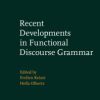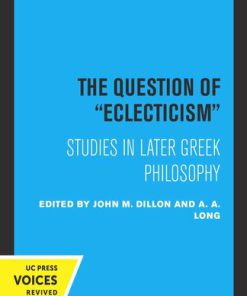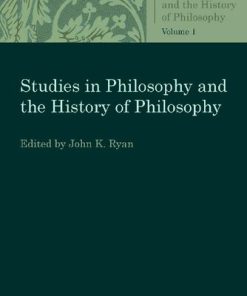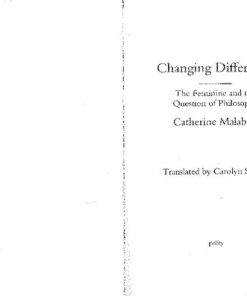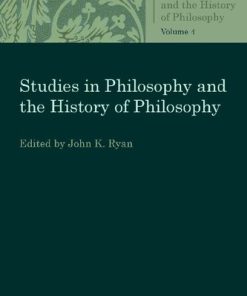Molyneux Question and the History of Philosophy 1st Edition by Gabriele Ferretti, Brian Glenney ISBN 9780367030926 0367030926
$50.00 Original price was: $50.00.$25.00Current price is: $25.00.
Molyneux Question and the History of Philosophy 1st Edition by Gabriele Ferretti, Brian Glenney – Ebook PDF Instant Download/Delivery: 9780367030926 ,0367030926
Full download Molyneux Question and the History of Philosophy 1st Edition after payment
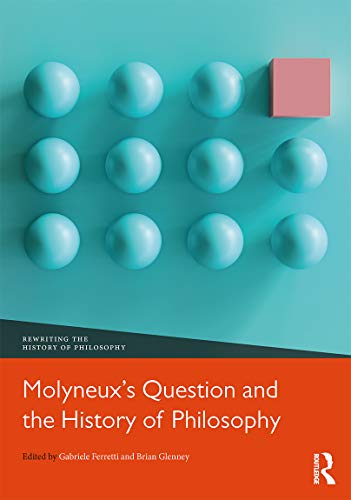
Product details:
ISBN 10: 0367030926
ISBN 13: 9780367030926
Author: Gabriele Ferretti, Brian Glenney
Molyneux Question and the History of Philosophy 1st Edition Table of contents:
Part I Historical advances in Molyneux’s question
Introduction to Part I: Historical advances in Molyneux’s question
Conjectures at new answers
Notes
References
1 Epicureanism and Molyneux’s question
Locke, Molyneux, and Epicureanism: why?
The problem of form
The problem of three-dimensionality
Epicurus and Molyneux
Notes
References
2 Molyneux, mysticism, empiricism, and independent thinking
What Ibn Ṭufayl wrote
Pococke brings Ibn Ṭufayl to England
Locke and Ibn Ṭufayl
Locke and Molyneux
Notes
3 A Spinozistic answer to Molyneux’s question
Spinoza’s negative answer?
Spinoza’s affirmative answer?
More questions and a thesis
Extension and its appearance
How Spinoza should answer Molyneux’s question
Notes
References
4 Amo on Molyneux’s question
Introduction
Amo’s commitments on cognition and sensation
Commitment 1: The human mind is impassive
Commitment 2: Sensation belongs to the organic, living body
Commitment 3: The mind can use its organic, living body as an instrument
Molyneux’s query in Amo’s framework
What might Amo respond to Molyneux’s question?
Option 1: Vision gives us figure directly
Option 2: Ideas of shape are not tied to a particular sense modality
Option 3: Ideas of vision could translate into ideas of touch
Amo’s response to Molyneux’s question, and what it might tell us about Amo’s philosophy
Notes
References
5 Margaret Cavendish and Molyneux’s question: Patterning, perception, and touch
Cavendish’s theory of perception and the furniture of the mind
Answering Molyneux’s question
A challenge to understanding Cavendish’s answer as “yes”: the “true knowledge” of objects
Conclusion
Notes
References
6 Damaris Masham and Molyneux’s question: What response would Masham have given?
Why not discuss Molyneux’s question?
Considering Molyneux’s question
An answer to Molyneux’s question
Conclusion
Notes
Acknowledgements
References
7 Molyneux’s question: The Irish debates
Introduction
Toland and Browne: Christian mysteries and revealed religion
King and Collins: human freedom and divine foreknowledge
Berkeley and Browne: analogical knowledge
Conclusion
Notes
Acknowledgements
References
8 Molyneux’s question at the Erasmiaans Gymnasium, Rotterdam
Molyneux, Locke and Rotterdam: the connection
Molyneux’s question answered by pupils of the Erasmiaans Gymnasium
Results
Numbers and percentages of affirmative and negative answers to Molyneux’s question, according to gender and age
Arguments for a positive answer
Arguments for a negative answer
Alternative versions of Molyneux’s question
Discussion
Notes
Acknowledgements
References
9 Molyneux’s vision
Introduction
Molyneux’s question
Molyneux and Berkeley
Recovery from cataract removal
Molyneux’s vision
References
Part II Ethical advances in Molyneux’s question
Introduction to Part II: Ethical advances in Molyneux’s question
Notes
References
10 The Cult of the Born Completely Blind Man, revisited
Introduction
The context of the Cult of the Born Completely Blind Man: the epistemology of the cult
Christian theology, the arts and deficit
The influence of Descartes and Boyle on the Enlightenment: Descartes and Dioptrics
Boyle and the theory of color
Locke and the Enlightenment: Locke’s political and theological journey
Locke, blindness and consciousness
Discussion
The problem of human taxonomies
Politics and metaphysics and their influence on theories of mind
Conclusion
Acknowledgements
References
11 The Molyneux cult
Part III Empirical advances in Molyneux’s question
Introduction to Part III: Empirical advances in Molyneux’s question
References
12 Molyneux’s question and the semantics of seeing
Introduction
What case studies pertaining to cataract surgery tell us about Molyneux’s question
The semantics of seeing
The semantics of “see” and Molyneux’s question
Low-level properties and low visual acuity
Higher-level perception and viewpoint-independent properties
Visuo-sensory states and MQ
Conclusion
Notes
References
13 Molyneux’s question and neuroscience of vision
Introduction
The effect of early visual deprivation on the development of visual processing
The effect of early visual deprivation on the development of multisensory processing
Restoration of sight as a tool to answer Molyneux’s question: initial approaches
A centuries-old enigma: modern experimental approaches to Molyneux’s question
Conclusion
References
14 No yes answers to Molyneux
Positive answers
Molyneux’s elephant and some original abstractions
Some complexities
Concluding scientific postscript
Notes
Acknowledgements
References
Part IV Philosophical advances in Molyneux’s question
Introduction to Part IV: Philosophical advances in Molyneux’s question
References
15 Molyneux’s question and interpersonal variations in multimodal mental imagery among blind subjects
Introduction
Molyneux’s question
Multimodal mental imagery
Mental imagery in blind people
Back to Molyneux’s question
Tolstoian conclusions
Notes
Acknowledgements
References
16 Molyneux’s question and perceptual judgments
Introduction
Perceptual judgments
Recovering sight
Philosophically informative empirical failures
Notes
References
17 Action at first sight
Which question?
Molyneux in action: the past
Molyneux in action: the present
A new question in action: the future
Vision-for-action, visuomotor imagery and action properties
Is superimposition of visuomotor imagery possible for newly sighted subjects?
Conclusion
Acknowledgements
Notes
References
18 Molyneux’s question and somatosensory spaces
Molyneux’s question as a thought experiment
Somatosensory spaces
The interoceptivity of pain
The exteroceptivity of thermal perception
Object perceptions and the tactile field
Back to Molyneux’s question
Notes
Further reading
References
19 Molyneux on LSD
NCCs
NCCs on LSD
Naïve reporting of conscious experience
A Molyneux methodology
The naivety condition and attention
Conclusion: a new paradigm for testing people born blind
Notes
References
20 What was Molyneux’s question a question about?
On the origin of general ideas
Experience, ideas, and properties
A new question: analysing ideas
Space and the modalities: sceptical remarks
Shape: foundation and integration
Beyond shape: the perceptual representation of faces, biological motion, and more
Another clue to modality-specific processing: evidence from illusion
Perceptual affect: does it carry over?
Conclusion
Notes
References
Index
People also search for Molyneux Question and the History of Philosophy 1st Edition:
history of philosophy hegel
history of philosophy meaning
history and philosophy of pre primary education
history of philosophy according to thomists
history of philosophy of education pdf
Tags: Gabriele Ferretti, Brian Glenney, Molyneux Question, History, Philosophy
You may also like…
Uncategorized
Uncategorized
Politics & Philosophy - General & Miscellaneous Philosophy
Studies in Philosophy and the History of Philosophy 1st Edition John K. Ryan
Politics & Philosophy - Renaissance & Modern Philosophy
Politics & Philosophy - Social Sciences
Changing Difference The Feminine and the Question of Philosophy 1st Edition Catherine Malabou
Uncategorized
Uncategorized
Politics & Philosophy - General & Miscellaneous Philosophy

